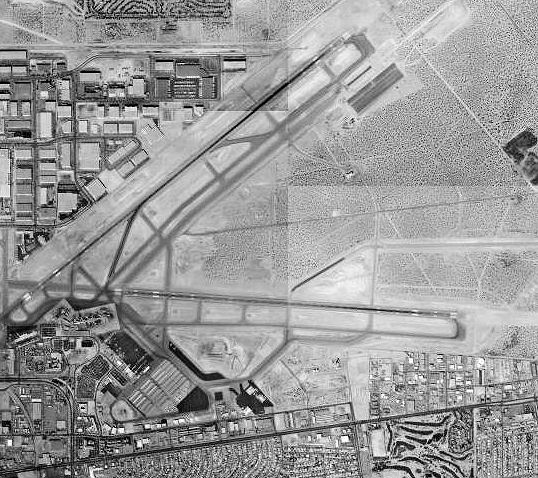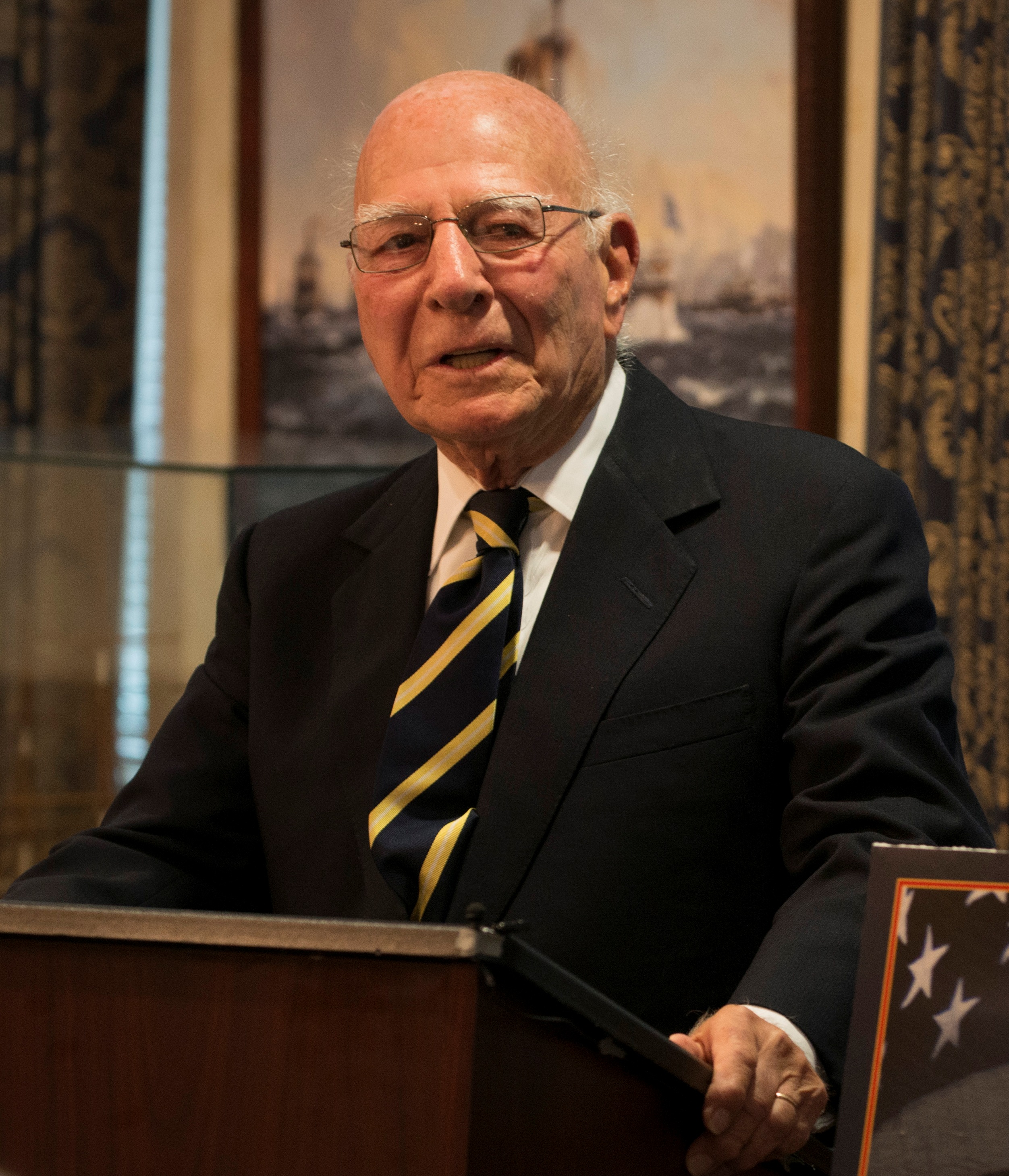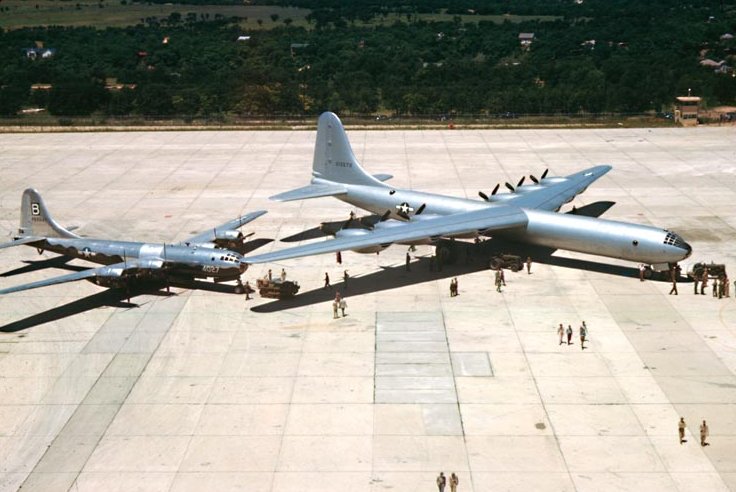|
Biggs Army Airfield
Biggs Army Airfield (formerly Biggs Air Force Base) is a United States Army military airbase located on the Fort Bliss military base in El Paso, Texas. History Biggs Field/Biggs Army Airfield (1916–47) On 15 June 1919, following an attack by Pancho Villa's forces on Ciudad Juárez, United States Army Air Service personnel equipped with Dayton-Wright DH-4 aircraft were sent to Fort Bliss to begin patrols of the U.S.-Mexico border, initiating the United States Army Border Air Patrol. In August 1919 construction commenced on a steel hangar for an airship station at Camp Owen Bierne, Fort Bliss and in December 1919 the 8th Balloon Company moved there from Brooks Field, Texas. In January 1920 the 1st Surveillance Group moved from Kelly Field to Fort Bliss. Biggs Air Force Base (1947–66) On 16 March 1948 the 97th Bombardment Wing, Heavy operating B-29 Superfortresses moved to Biggs AFB from Smoky Hill Air Force Base, Kansas. The 810th Air Division was activated at Biggs ... [...More Info...] [...Related Items...] OR: [Wikipedia] [Google] [Baidu] |
United States Department Of The Army Seal
United may refer to: Places * United, Pennsylvania, an unincorporated community * United, West Virginia, an unincorporated community Arts and entertainment Films * ''United'' (2003 film), a Norwegian film * ''United'' (2011 film), a BBC Two film Literature * ''United!'' (novel), a 1973 children's novel by Michael Hardcastle Music * United (band), Japanese thrash metal band formed in 1981 Albums * ''United'' (Commodores album), 1986 * ''United'' (Dream Evil album), 2006 * ''United'' (Marvin Gaye and Tammi Terrell album), 1967 * ''United'' (Marian Gold album), 1996 * ''United'' (Phoenix album), 2000 * ''United'' (Woody Shaw album), 1981 Songs * "United" (Judas Priest song), 1980 * "United" (Prince Ital Joe and Marky Mark song), 1994 * "United" (Robbie Williams song), 2000 * "United", a song by Danish duo Nik & Jay featuring Lisa Rowe Television * ''United'' (TV series), a 1990 BBC Two documentary series * ''United!'', a soap opera that aired on BBC One from 1965 ... [...More Info...] [...Related Items...] OR: [Wikipedia] [Google] [Baidu] |
Boeing B-29 Superfortress
The Boeing B-29 Superfortress is an American four-engined propeller-driven heavy bomber, designed by Boeing and flown primarily by the United States during World War II and the Korean War. Named in allusion to its predecessor, the B-17 Flying Fortress, the Superfortress was designed for high-altitude strategic bombing, but also excelled in low-altitude night incendiary bombing, and in dropping naval mines to blockade Japan. B-29s dropped the atomic bombs on Hiroshima and Nagasaki, the only aircraft ever to drop nuclear weapons in combat. One of the largest aircraft of World War II, the B-29 was designed with state-of-the-art technology, which included a pressurized cabin, dual-wheeled tricycle landing gear, and an analog computer-controlled fire-control system that allowed one gunner and a fire-control officer to direct four remote machine gun turrets. The $3 billion cost of design and production (equivalent to $ billion today), far exceeding the $1.9 ... [...More Info...] [...Related Items...] OR: [Wikipedia] [Google] [Baidu] |
Goose Air Base
Canadian Forces Base Goose Bay , commonly referred to as CFB Goose Bay, is a Canadian Forces Base located in the municipality of Happy Valley-Goose Bay in the province of Newfoundland and Labrador. It is operated as an air force base by the Royal Canadian Air Force (RCAF). Its primary RCAF lodger unit is 5 Wing, commonly referred to as 5 Wing Goose Bay. The airfield at CFB Goose Bay is also used by civilian aircraft, with civilian operations at the base referring to the facility as Goose Bay Airport. The airport is classified as an airport of entry by Nav Canada and is staffed by the Canada Border Services Agency (CBSA). CBSA officers at this airport can handle general aviation aircraft only, with no more than 15 passengers. The mission of 5 Wing is to support the defence of North American airspace, as well as to support the RCAF and allied air forces in training. Two units compose 5 Wing: 444 Combat Support Squadron (flying the CH-146 Griffon) and 5 Wing Air Reserve F ... [...More Info...] [...Related Items...] OR: [Wikipedia] [Google] [Baidu] |
El Paso International Airport
El Paso International Airport (EPIA, , es, Aeropuerto Internacional de El Paso) is four miles (6 km) northeast of downtown El Paso, in El Paso County, Texas, United States. It is the largest civil airport in West Texas. It handled 3,516,911 passengers in 2019. History The City of El Paso built the first El Paso Municipal Airport near the east side of the Franklin Mountains in 1928. The airport was closed by 1945 and in more recent times has been home to the Jobe Concrete Products "Planeport" cement factory. In 1934 Varney Speed Lines (now United Airlines) operated at the original El Paso Municipal Airport (now closed). The original El Paso Municipal Airport construction was inspired by a visit from Charles Lindbergh. What became today's El Paso International Airport was built as Standard Airport by Standard Airlines in 1929 for transcontinental air mail service. Standard Airlines became a division of American Airlines in the 1930s. In 1936 American Airlines "swapped" air ... [...More Info...] [...Related Items...] OR: [Wikipedia] [Google] [Baidu] |
Paul Robert Ignatius
Paul Robert Ignatius (born November 11, 1920) is an American government official who served as Secretary of the Navy between 1967 and 1969 and was the Assistant Secretary of Defense during the Lyndon Johnson Administration. Life and career Ignatius was born in 1920 in Glendale, California, the son of Armenian parents who migrated to the United States, Elisa (née Jamgochian; hy, Ժամկոչեան) and Hovsep "Joseph" B. Ignatius (original last name – Ignatosian; hy, Իգնատոսեան). Ignatius' ancestors came from the historic Armenian settlement of Agin near Kharpert. Ignatius is a trustee of the George C. Marshall Foundation and member of the Federal City Council and the Washington Institute of Foreign Affairs. He has served previously as cofounder and chairman of the board of trustees for Logistics Management Institute; chairman, president and CEO of Air Transport Association; president of ''The Washington Post'' newspaper and executive vice president of The Washing ... [...More Info...] [...Related Items...] OR: [Wikipedia] [Google] [Baidu] |
Assistant Secretary Of Defense For Logistics And Materiel Readiness
The Assistant Secretary of Defense for Sustainment, formerly known as the Assistant Secretary of Defense for Logistics and Materiel Readiness, is one of three assistant secretaries reporting to the Under Secretary of Defense for Acquisition and Sustainment. Formerly the position was an adviser to the Under Secretary of Defense for Acquisition, Technology and Logistics, Deputy Secretary of Defense, and Secretary of Defense on logistics and materiel readiness issues within the Department of Defense (DoD), including programs related to logistics, materiel readiness, maintenance, strategic mobility, and sustainment support. As the principal logistics official within the senior management of the DoD, the ASD (L&MR) exercises authority, direction and control over the director of the Defense Logistics Agency. Like all other Assistant Secretaries of Defense, the ASD (L&MR) is considered a part of the Office of the Secretary of Defense. As part of a reorganization on 12 October 2018, the AS ... [...More Info...] [...Related Items...] OR: [Wikipedia] [Google] [Baidu] |
North Dakota
North Dakota () is a U.S. state in the Upper Midwest, named after the indigenous Dakota Sioux. North Dakota is bordered by the Canadian provinces of Saskatchewan and Manitoba to the north and by the U.S. states of Minnesota to the east, South Dakota to the south, and Montana to the west. It is believed to host the geographic center of North America, Rugby, and is home to the tallest man-made structure in the Western Hemisphere, the KVLY-TV mast. North Dakota is the 19th largest state, but with a population of less than 780,000 as of 2020, it is the 4th least populous and 4th most sparsely populated. The capital is Bismarck while the largest city is Fargo, which accounts for nearly a fifth of the state's population; both cities are among the fastest-growing in the U.S., although half of all residents live in rural areas. The state is part of the Great Plains region, with broad prairies, steppe, temperate savanna, badlands, and farmland being defining characteris ... [...More Info...] [...Related Items...] OR: [Wikipedia] [Google] [Baidu] |
Minot Air Force Base
Minot Air Force Base is a U.S. Air Force installation in Ward County, North Dakota, north of the city of Minot via U.S. Route 83. In the 2020 census, the base was counted as a CDP with a total population of 5,017, down from 5,521 in 2010. Minot AFB is the home of two major wings: the 5th Bomb Wing and 91st Missile Wing, both of the Air Force Global Strike Command (AFGSC). Originally opened in 1957 as an Air Defense Command (ADC) base, Minot AFB became a major Strategic Air Command (SAC) base in the early 1960s, with both nuclear armed intercontinental ballistic missiles and manned bombers and aerial refueling aircraft. When SAC was inactivated in 1992, the nuclear mission of the base was divided between two commands, with missiles going to the Air Force Space Command (AFSPC) and manned bombers to the Air Combat Command (ACC). With the establishment of the Air Force Global Strike Command (AFGSC) in 2009, missiles and manned bombers (excluding the B-1 Lancer) wer ... [...More Info...] [...Related Items...] OR: [Wikipedia] [Google] [Baidu] |
Blytheville Air Force Base
Blytheville Air Force Base was a United States Air Force base from 1942, until it closed in 1992. In 1988, the facility was renamed Eaker Air Force Base in honor of World War II General of the Eighth Air Force, Ira C. Eaker. It was located northwest of Blytheville, Arkansas. The facility now operates as the Arkansas Aeroplex and Arkansas International Airport. History Constructed on former agricultural land, the site was originally activated as the Blytheville Army Airfield in 1942. During World War II, the site served as a training airfield as part of the 70,000 Pilot Training Program. It was one of many air fields created in the country's interior during the war for this purpose. Blytheville, Arkansas was selected as a training location due to its proximity to the Mississippi River, where supplies could easily be shipped to and from the site. The airfield was used as the Southeastern Training Command's flight training school, which closed in October 1945 after the Second ... [...More Info...] [...Related Items...] OR: [Wikipedia] [Google] [Baidu] |
Convair B-36 Peacemaker
The Convair B-36 "Peacemaker" is a strategic bomber that was built by Convair and operated by the United States Air Force (USAF) from 1949 to 1959. The B-36 is the largest mass-produced piston-engined aircraft ever built. It had the longest wingspan of any combat aircraft ever built, at . The B-36 was the first bomber capable of delivering any of the nuclear weapons in the U.S. arsenal from inside its four bomb bays without aircraft modifications. With a range of and a maximum payload of , the B-36 was capable of intercontinental flight without refuelling. Entering service in 1948, the B-36 was the primary nuclear weapons delivery vehicle of Strategic Air Command (SAC) until it was replaced by the jet-powered Boeing B-52 Stratofortress beginning in 1955. All but four aircraft have been scrapped. Development The genesis of the B-36 can be traced to early 1941, prior to the entry of the United States into World War II. At the time, the threat existed that Britain might fall ... [...More Info...] [...Related Items...] OR: [Wikipedia] [Google] [Baidu] |
B-50 Superfortress
The Boeing B-50 Superfortress is an American strategic bomber. A post–World War II revision of the Boeing B-29 Superfortress, it was fitted with more powerful Pratt & Whitney R-4360 radial engines, stronger structure, a taller tail fin, and other improvements. It was the last piston-engined bomber built by Boeing for the United States Air Force, and was further refined into Boeing's final such design, the B-54. Although not as well known as its direct predecessor, the B-50 was in USAF service for nearly 20 years. After its primary service with Strategic Air Command (SAC) ended, B-50 airframes were modified into aerial tankers for Tactical Air Command (TAC) (KB-50) and as weather reconnaissance aircraft (WB-50) for the Air Weather Service. Both the tanker and hurricane hunter versions were retired in March 1965 due to metal fatigue and corrosion found in the wreckage of KB-50J, ''48-065'', which crashed on 14 October 1964. Design and development Development of an improved B ... [...More Info...] [...Related Items...] OR: [Wikipedia] [Google] [Baidu] |
B-36 Peacemaker
The Convair B-36 "Peacemaker" is a strategic bomber that was built by Convair and operated by the United States Air Force (USAF) from 1949 to 1959. The B-36 is the largest mass-produced piston-engined aircraft ever built. It had the longest wingspan of any combat aircraft ever built, at . The B-36 was the first bomber capable of delivering any of the nuclear weapons in the U.S. arsenal from inside its four bomb bays without aircraft modifications. With a range of and a maximum payload of , the B-36 was capable of intercontinental flight without refuelling. Entering service in 1948, the B-36 was the primary nuclear weapons delivery vehicle of Strategic Air Command (SAC) until it was replaced by the jet-powered Boeing B-52 Stratofortress beginning in 1955. All but four aircraft have been scrapped. Development The genesis of the B-36 can be traced to early 1941, prior to the entry of the United States into World War II. At the time, the threat existed that Britain might fall to ... [...More Info...] [...Related Items...] OR: [Wikipedia] [Google] [Baidu] |







